|

HOME |
ABOUT | INDEX |
NEWS |
FACEBOOK |
CONTACT
NUDISM
Nudity | Naturism | Nakedness | Clothing Optional
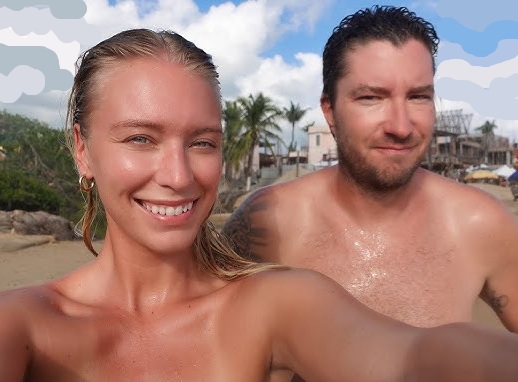
BDSM|Kink
Drag|Cross Dressing
Bear Community
Furries|Cosplay
Ballroom Culture
Polyamory
Skirt Club
Down Low

Getting Naked
Naturist Lifestyle
The nudist
or naturist lifestyle involves a voluntary practice of
going nude, especially in mixed-gender social settings,
for health, social, or personal reasons. It is not
inherently sexual and is a lifestyle choice for those
who seek comfort, freedom from clothing, and acceptance
of their bodies. Practices can range from spending time
at home without clothes to visiting specific nudist
beaches or communities.
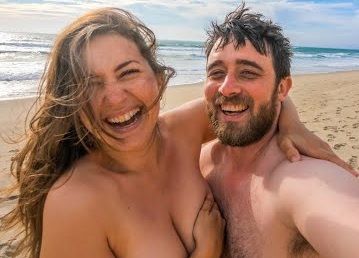

Key
aspects of the nudist lifestyle
--Voluntary and consensual: It is a personal choice to
go nude, distinct from public indecency laws that apply
to non-consensual nudity.
--Focus on comfort: Many proponents find it more
comfortable, especially during activities that cause
sweating, like yard work, as it eliminates the need to
wash ruined clothes.
--Body acceptance and freedom: A core component is the
psychological and physical freedom from the constraints
of clothing and the judgment associated with it, which
promotes self-acceptance and body confidence.
--Not inherently sexual: The lifestyle is often
non-sexual and focuses on a natural, comfortable state
of being.
--Range of practice: Individuals may choose to be nude
only at home or may participate in activities at
designated clothing-optional beaches, resorts, or clubs.
What is
Naturism?
American Association for
Nude Recreation
The Nudist Edge: The
Benefits of the Naturist Lifestyle
How to Live a Nudist Lifestyle
Nudist Resort: Rules and Regulations
Bare Essentials: Beginner's Guide to Naturism
Nude Beaches Every Gay Man Should Visit
Skinny Dipping: Bare
Essentials to Getting Naked
Naked Truth About Nudist Lifestyle
Difference
Between Nudist and Naturist
What’s the appeal of becoming a naturist?
Wondering what life is like for nudists? Is your
birthday suit your favorite outfit? Here’s what you need
to know.
Naturism promotes wholesomeness and stability of the
human body, mind, and spirit.
Essentially, naturists believe that baring it all has
physical and mental health benefits, including stress
relief and improved self-esteem. Spirituality, harmony
with nature and family participation are all key tenants
of the practice — which yes, means it’s not just for
adults. Naturism is a non-sexual activity and naturist
parents encourage their kids to appreciate bodies as
part of their natural environment.
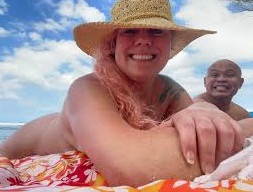


What’s the difference between a nudist and a
naturist?
Like all labels, the answer really depends on whom you
ask — and whether they’re actively involved in the
community.
The two terms are somewhat interchangeable, with
“naturist” being the preferred term for people who enjoy
being nude in public settings. Meanwhile “nudist” may be
used to describe those who hang out in the buff, but are
less connected to the spiritual and health aspects of
the practice. It may also have negative connotations.
I’m ready to dare to bare it all. Where can I try it
out?
To let it all hang out in public, nude beaches are a
good place to start. Free to attend, there’s a low level
of commitment and you can wear as much or as little as
you feel comfortable. With that being said, staying
clothed on a nudist beach defeats the purpose and may
turn you into a gawker, rather than a participant.
Naturism is about creating situations where there is
psychological, emotional equality between people and you
can’t do that if one person is dressed and the other is
nude.
You’ll
also want to keep in mind that most of nude beaches and
other outdoor areas are simply places where authorities
turn a blind eye. If you want to stay on the right side
of the law, you will need to find legal
clothing-optional beaches. Or, it might be time to sign
up for a private club. Private nudist colonies, camps,
and resorts have been in operation for many years.
[Source: Jessica Wynne Lockhart, Cottage Life, March
2018]
Main Reasons People Go to Nudist Camps
Nudism and the LGBTQ Community: Promoting
Inclusivity and Acceptance
Naturism: Philosophy
Behind it and How to Practice it
Naturism
in the United States
Gay
Naturism
How to Skinny Dip with Friends
Top Gay Clothing Optional Cruises
Queer Nude Beach: Healing From Trauma

Bare Essentials:
Beginner's Guide to Naturism
Philosophy of Naturism
Naturism,
also known as nudism, is a lifestyle characterized by
the practice of communal nudity with the intent of
encouraging self-respect, and respect for others, and
the environment. Venturing into naturism can be a
liberating and unique experience but may seem daunting
to newcomers. This comprehensive guide is designed to
ease beginners into the world of naturism and provide
you with tips to navigate this lifestyle with confidence
and ease.
Naturism is not merely about shedding your clothes; it's
a philosophy that values simplicity and an increased
harmony with nature. This lifestyle choice promotes body
positivity, self-esteem, and an egalitarian society
where individuals are valued for themselves rather than
their appearances.
Health and Naturism - Connecting with nature and living
a clothing-free lifestyle can have various health
benefits, including improved vitamin D intake, better
skin health, and reduced stress levels. It's a way of
life that celebrates the human body in its most natural
state and can lead to a more profound sense of
well-being.
The Legal Aspect - It's crucial to understand the
legalities of naturism in your area. Not all countries
have the same approach to public nudity, and in some
places, it might be restricted or outright illegal.
Research the laws and cultural attitudes towards nudity
in your destination before engaging in any naturist
activities.
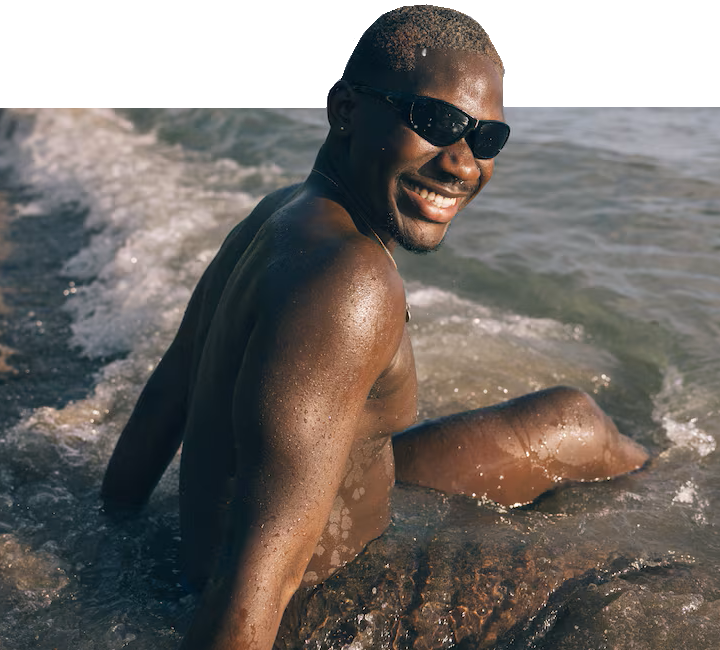

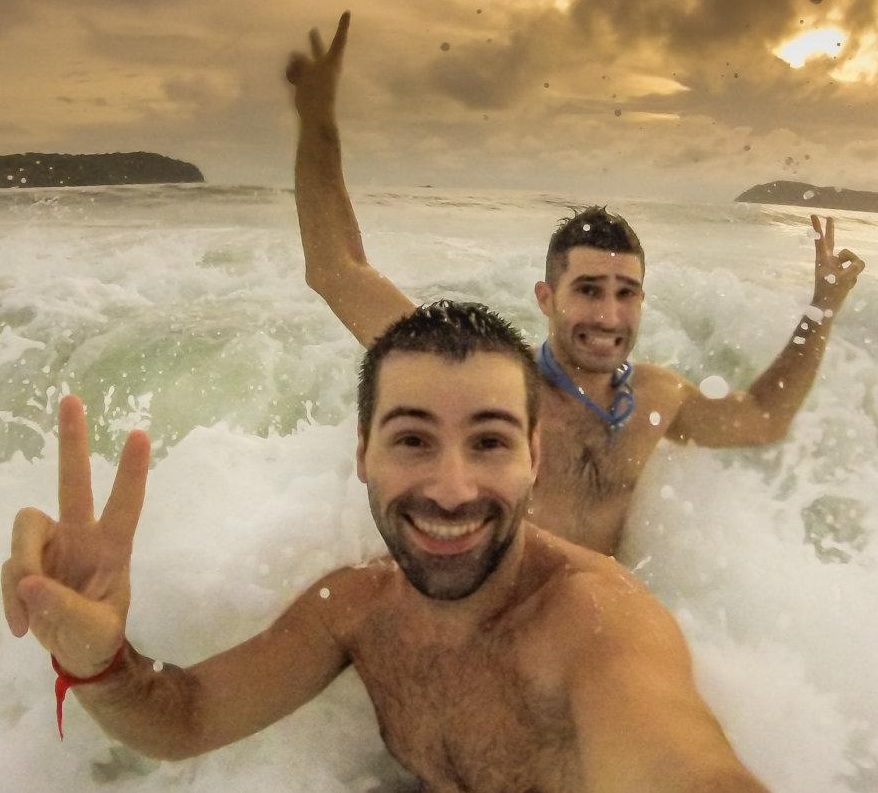
What is
Naturism?
American Association for
Nude Recreation
The Nudist Edge: The
Benefits of the Naturist Lifestyle
How to Live a Nudist Lifestyle
Nudist Resort: Rules and Regulations
Bare Essentials: Beginner's Guide to Naturism
Nude Beaches Every Gay Man Should Visit
Skinny Dipping: Bare
Essentials to Getting Naked
Naked Truth About Nudist Lifestyle
Preparing for a Naturist Experience
As a beginner, you may feel anxious about your first
naturist experience. Here are some preparatory steps you
can take to make the transition easier.
Personal Hygiene - Maintaining good hygiene is of utmost
importance in naturist circles. Showering before
engaging in social nudity is a common courtesy extended
to fellow naturists. Additionally, carrying a towel with
you at all times to sit on is considered a basic
etiquette in the naturist community.
Body Image - Many new naturists worry about their body
image. Remember that naturism promotes acceptance and
respect for bodies of all shapes and sizes. Focus on
becoming comfortable with your own body and try to let
go of societal pressures regarding physical appearance.
At-Home Nudity - Get comfortable with being naked in the
privacy of your home. Spend increasing amounts of time
in the nude to become accustomed to the sensation and
naturalness of being without clothes.

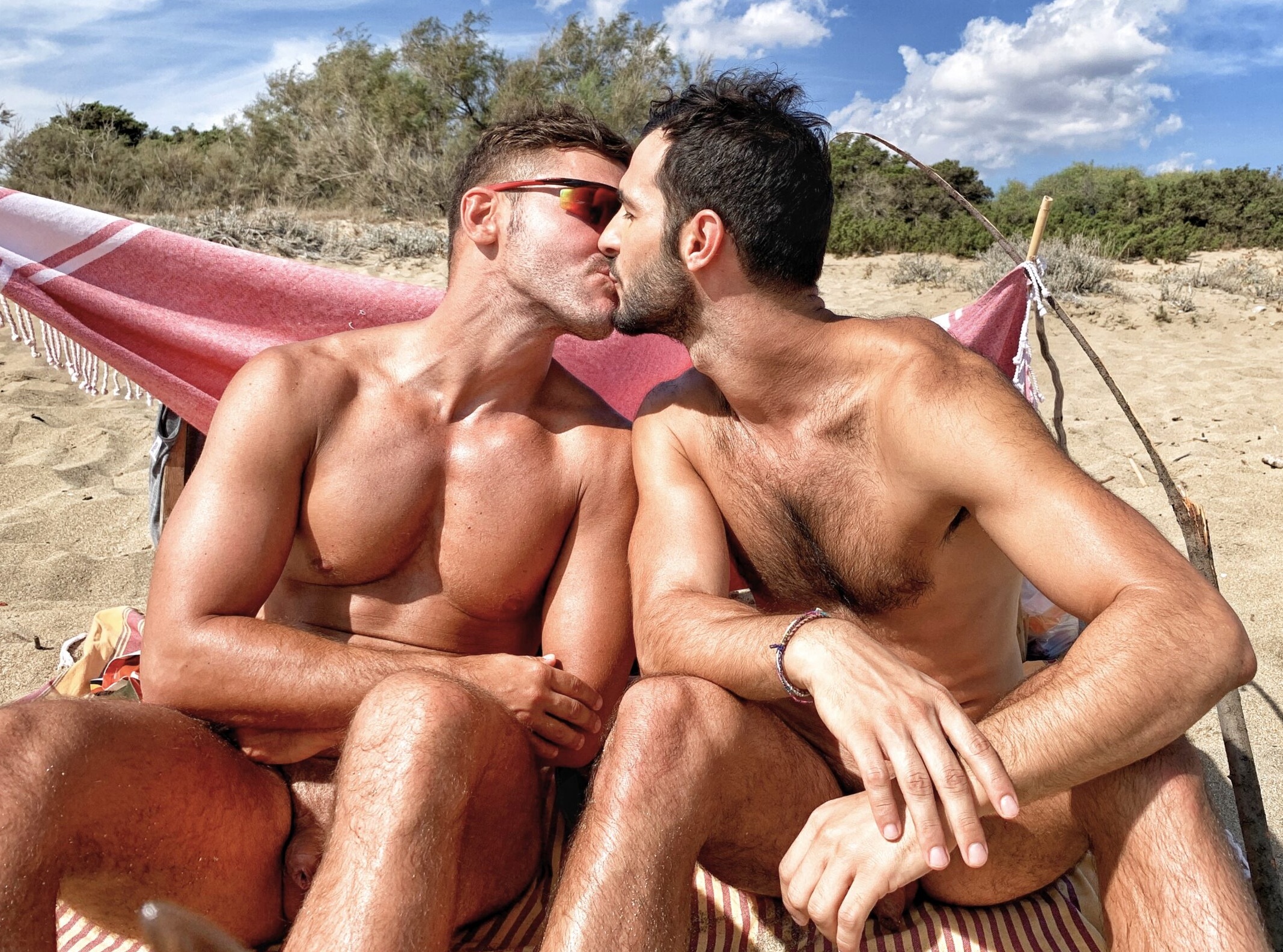

Finding the Right Naturist Environment
The next
step is to find the right setting for your comfort
level. There are various naturist venues from which to
choose, each offering different experiences.
Naturist Resorts - Resorts are often the go-to option
for beginners due to the controlled environment and
numerous amenities. They provide a safe space where
nudity is the norm and often feature pools, spas, and
recreational activities.
Naturist Beaches - If you're located near the coast, a
naturist beach might be within reach. It's best to visit
during the week when the beaches are less crowded for a
more relaxed introduction.
Naturist Clubs and Associations - Naturist clubs and
associations can offer a sense of community and
organized events. Being part of a club might help you
feel more at ease given the structured setting and the
presence of seasoned naturists.
Naturist Events - Various events such as festivals,
sports competitions, and gatherings are held by the
naturist community. These can provide fun and
interactive ways to meet people and immerse yourself in
the lifestyle.
Engaging with the Naturist Community
Meeting like-minded individuals can be one of the most
rewarding aspects of naturism. Here’s how to engage
respectfully and effectively:

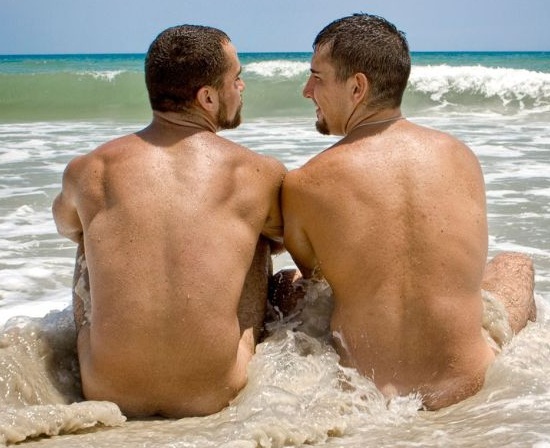

Main Reasons People Go to Nudist Camps
Nudism and the LGBTQ Community: Promoting
Inclusivity and Acceptance
Naturism: Philosophy
Behind it and How to Practice it
Naturism
in the United States
Gay
Naturism
How to Skinny Dip with Friends
Top Gay Clothing Optional Cruises
Queer Nude Beach: Healing From Trauma
Social Interactions
When interacting with other naturists, maintain eye
contact, and practice active listening. These two
actions can go a long way in showing respect and
building rapport.
Consent and Boundaries - Just because a space is
clothing-free does not mean that personal boundaries are
non-existent. Always ask for consent before engaging in
any form of physical contact and be sure to respect
people's personal space.
Networking - Take advantage of social media and forums
dedicated to naturism to connect with others and learn
from their experiences. Networking with the community
can provide valuable insights and enhance your
experience.
Dealing with Awkwardness - It's natural to feel awkward
or embarrassed initially. If you find yourself in an
uncomfortable situation, don't hesitate to remove
yourself from it. The community is understanding and
supportive of personal comfort levels.



Dos
and Don'ts in Naturist Spaces
Do...
--Be polite and introduce yourself to others.
--Use a towel to sit on in communal areas.
--Follow the specific rules of the naturist venue you
are visiting.
--Apply sunscreen to protect your skin from
overexposure.
--Stay hydrated, especially if you're spending time
outdoors.
Don't...
--Engage in explicit sexual behavior; naturism is not
about sexual exhibitionism.
--Take pictures of others without their express
permission.
--Stare at others; treat this as you would any other
public space where individuals deserve respect.
--Forget to check in with your own comfort levels; step
back if you need to.



What is
Naturism?
American Association for
Nude Recreation
The Nudist Edge: The
Benefits of the Naturist Lifestyle
How to Live a Nudist Lifestyle
Nudist Resort: Rules and Regulations
Bare Essentials: Beginner's Guide to Naturism
Nude Beaches Every Gay Man Should Visit
Skinny Dipping: Bare
Essentials to Getting Naked
Naked Truth About Nudist Lifestyle
The
Psychological Transition
Embracing
a lifestyle that's different from societal norms can
lead to a psychological transition. Here are ways you
can navigate this shift for a better naturist
experience:
Expect and Accept Transition Periods - It’s completely
normal to need a period of adjustment. You may oscillate
between feeling free and being self-conscious, and
that's okay.
Mindfulness and Naturism - Mindfulness techniques can
help with the psychological transition to naturism.
Breathing exercises and meditation can promote
relaxation and body acceptance.
Keeping Naturism Enjoyable and Safe - While naturism is
an enjoyable and enriching lifestyle for many, keeping
safety in mind is still important.
Sun Safety - The sun can be both friend and foe. Enjoy
its warmth and vitamin D benefits but be sure to use
sunscreen to prevent burns and long-term skin damage.
Personal Safety - As in any community, it's vital to
remain vigilant about personal safety. Trust your
instincts and don't put yourself in situations where you
feel unsafe.
Digital Safety - If you participate in online naturist
communities, be cautious when sharing personal
information and photos. Digital footprints are permanent
and can be misused.



Embracing naturism as a beginner is an exciting
prospect, filled with opportunities for personal growth,
community involvement, and a deeper connection with
nature. By preparing yourself, finding the right
naturist setting, engaging with the community, and
following the unwritten rules of etiquette, you can
navigate this lifestyle respectfully and enjoyably.
Remember to listen to your body and mind, and proceed at
a pace that feels right for you.
In embarking on this journey, you're not just learning
how to be comfortable in your skin—you're joining a
movement that celebrates humanity in its most natural
state. Enjoy the sunshine, the fresh air, and the sense
of freedom that comes with stepping out of your clothes
and into a world where you can truly be yourself.
As you navigate your path through naturism, allow
yourself the grace to evolve and adapt. With each step,
you may just find that you're not only discovering the
joys of an unencumbered lifestyle but also uncovering
layers of confidence and acceptance that extend far
beyond the boundaries of any naturist space.
Welcome to the world of naturism, a place where you can
let go of the confines of everyday life and embrace a
more natural way of being. Here's to new beginnings,
fresh experiences, and the joy of being one with
nature—holistically, joyfully, and authentically.
[Source: Gary Holden, AANR, March 2024]
What is
Naturism?
American Association for
Nude Recreation
The Nudist Edge: The
Benefits of the Naturist Lifestyle
How to Live a Nudist Lifestyle
Nudist Resort: Rules and Regulations
Bare Essentials: Beginner's Guide to Naturism
Nude Beaches Every Gay Man Should Visit
Skinny Dipping: Bare
Essentials to Getting Naked
Naked Truth About Nudist Lifestyle
Main Reasons People Go to Nudist Camps
Nudism and the LGBTQ Community: Promoting
Inclusivity and Acceptance
Naturism: Philosophy
Behind it and How to Practice it
Naturism
in the United States
Gay
Naturism
How to Skinny Dip with Friends
Top Gay Clothing Optional Cruises
Queer Nude Beach: Healing From Trauma
Skinny Dipping
Getting naked in water... ocean, pool, lake, pond...
Skinny dipping, or swimming naked, is an outdoor recreational
activity practiced across many cultures, often
associated with a sense of freedom and a closer
connection to nature. Key aspects of the activity
include:
Sense of
Liberation: Many participants describe the experience as
a liberating and exhilarating departure from social
norms, offering a break from the self-consciousness
often associated with swimwear.
Connection
to Nature: Swimming without artificial barriers is seen
by some as a way to engage more directly with the
natural environment, whether in an ocean, lake, river,
or pool.


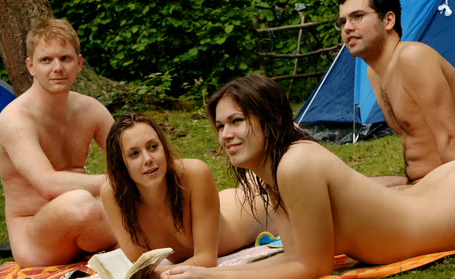
Privacy
and Setting: It is generally practiced in secluded
locations or at specific times to avoid public exposure
and legal issues, as public nudity laws vary widely by
location.
Social
Context: While sometimes a solitary activity, it's also
frequently a shared experience among friends or
partners, sometimes associated with late-night swimming
or informal gatherings.
In
essence, skinny dipping is often viewed as a spontaneous
and intimate act that challenges conventional views on
clothing, the body, and the relationship between humans
and water.
What's the point of skinny-dipping?
People skinny dip for a variety of reasons, including
the liberating and exhilarating feeling of freedom, the
sensual pleasure of water on bare skin, and a sense of
connection with nature. Other motivations include it
being a fun social activity, a way to boost mood through
endorphin release, a romantic experience, or to overcome
body image issues and feel more empowered.
Freedom and exhilaration: Skinny dipping is often
described as a freeing experience that removes the
constraints of clothing, allowing people to feel more
uninhibited and adventurous.
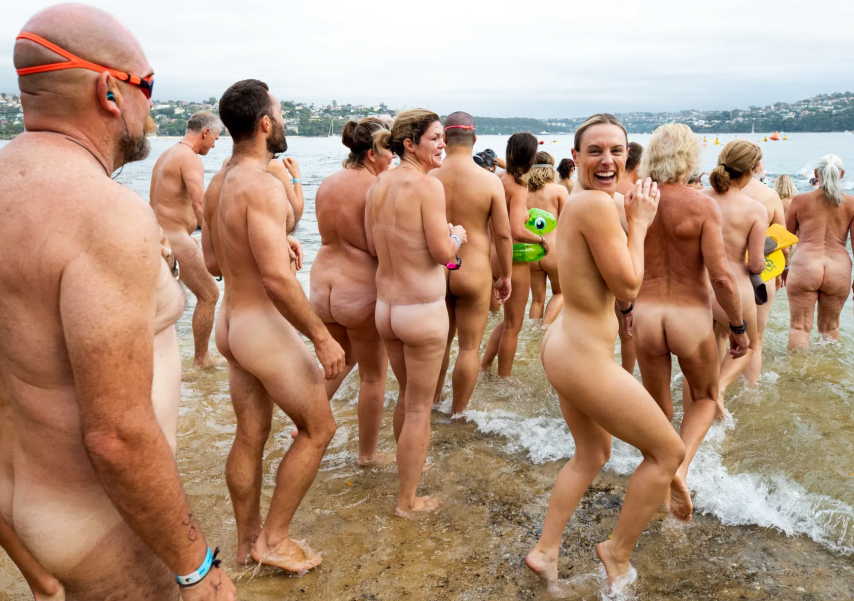
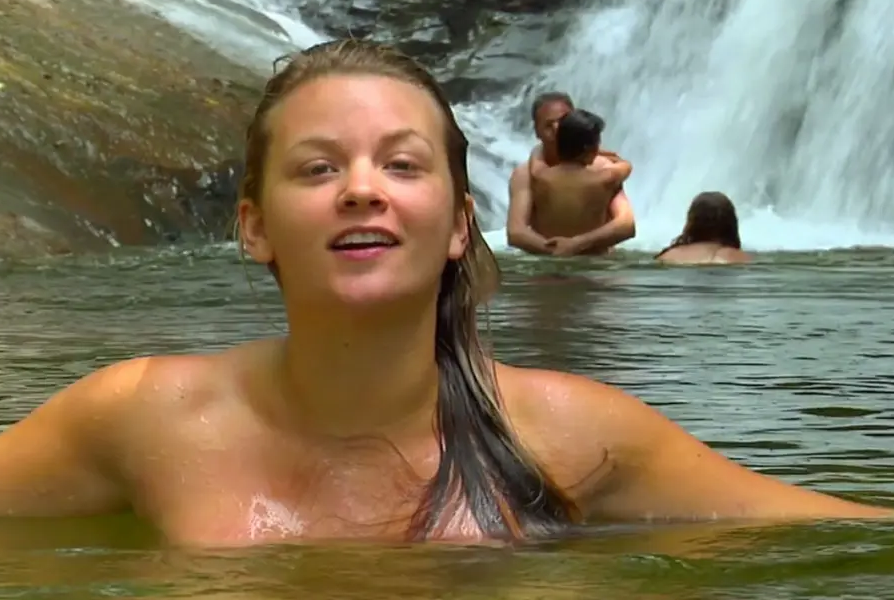
Sensual
pleasure: The sensation of cool water flowing over bare
skin is highly pleasurable, with some noting it can feel
even better than swimming in a swimsuit.
Emotional
boost: Cold water immersion can release endorphins,
which are natural mood lifters. Some studies suggest it
may even help reduce symptoms of anxiety and depression.
Connection
with nature: For many, swimming naked is a way to feel
more connected to the natural world, a raw and
vulnerable experience that fosters a sense of being part
of the landscape.
Body
positivity: It can be a way to embrace and appreciate
one's body, providing a sense of empowerment and helping
to nullify self-consciousness.
Romance
and bonding: Skinny dipping can be a romantic experience
for a partner or a fun, bonding activity with friends.
What is
Naturism?
American Association for
Nude Recreation
The Nudist Edge: The
Benefits of the Naturist Lifestyle
How to Live a Nudist Lifestyle
Nudist Resort: Rules and Regulations
Bare Essentials: Beginner's Guide to Naturism
Nude Beaches Every Gay Man Should Visit
Skinny Dipping: Bare
Essentials to Getting Naked
Naked Truth About Nudist Lifestyle
Naked Statistics
and Facts
Participation, membership, demographics
Precise statistics on the total number of
self-identified "naturists" or "nudists" in the USA are
difficult to obtain, as there is no official census data
on the subject. However, surveys and organizational
memberships offer some estimates.
Participation: It is estimated that approximately 11% of
the US population participates in social nudity. More
recent data from a survey suggests the share of women
naturists is around 7%.
Organizational Membership: The American Association for
Nude Recreation (AANR), a major organization for social
nudity in North America, has over 50,000 members and
more than 200 affiliated clubs and resorts. This number
is for members only and does not include the many
non-members who visit clothing-optional locations or
practice nudity at home.
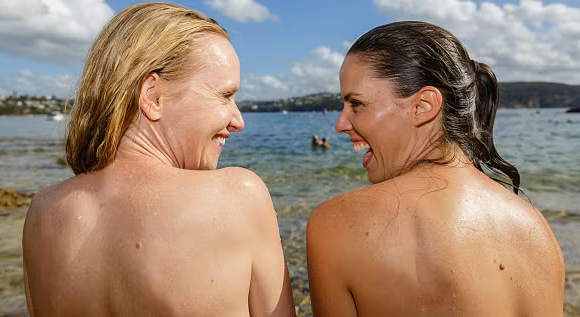

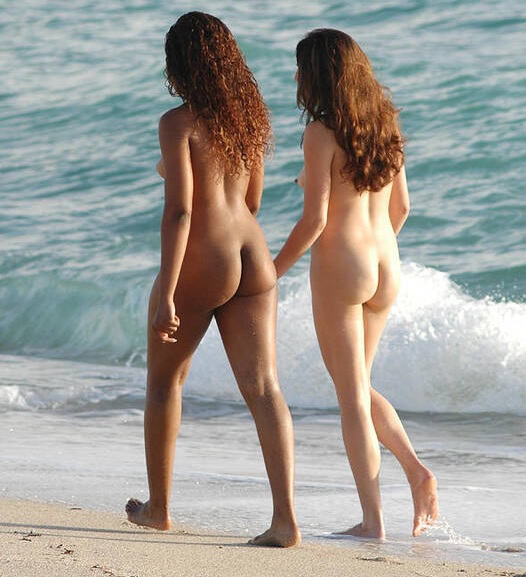
Demographics: In 2015, a significant majority of AANR
members were over the age of 35, with the median age at
one typical nudist camp being 55.
Casual Participation: A 2025 government poll found that
55% of Americans have been publicly naked or topless on
at least one occasion. Other polls suggest that a
significant percentage of the population (15-30%) enjoys
being nude at home, where it is accepted, or at least
sleeps naked.
Attitudes:
A national Roper poll indicated that 80% of the US
public agrees that it is acceptable to have a designated
nude beach, provided it is properly marked with a sign.
Overall,
while dedicated, organized "members" number in the tens
of thousands, the broader population that occasionally
practices or is open to some form of social or private
nudity is significantly larger, potentially encompassing
a substantial minority of the US population.

Main Reasons People Go to Nudist Camps
Nudism and the LGBTQ Community: Promoting
Inclusivity and Acceptance
Naturism: Philosophy
Behind it and How to Practice it
Naturism
in the United States
Gay
Naturism
How to Skinny Dip with Friends
Top Gay Clothing Optional Cruises
Queer Nude Beach: Healing From Trauma
Nudity and
Wellness
Nudity can be therapeutic
Being
naked can enhance feelings of wellness by fostering body
positivity, self-esteem, and a greater sense of
connection. Historically, nude psychotherapy was a
specific practice, and today, similar benefits are
sought through activities like nude art, communal nudist
practices, and other therapeutic workshops focused on
overcoming body shame.
Therapeutic benefits
Improved
body image: Nudity can help individuals become more
comfortable with their bodies and reduce
self-consciousness.
Increased
self-esteem: Connecting with one's body in a
non-judgmental way can lead to greater self-acceptance
and boosted self-esteem.
Reduced shame: By exposing the diversity of bodies and
moving beyond stereotypical beauty standards, nudity can
help diminish body shame and the anxiety associated with
it.
Enhanced
authenticity: Removing clothing can be a symbolic act
that helps individuals connect with their "authentic
selves" and promote a feeling of vulnerability and trust
in a group setting.
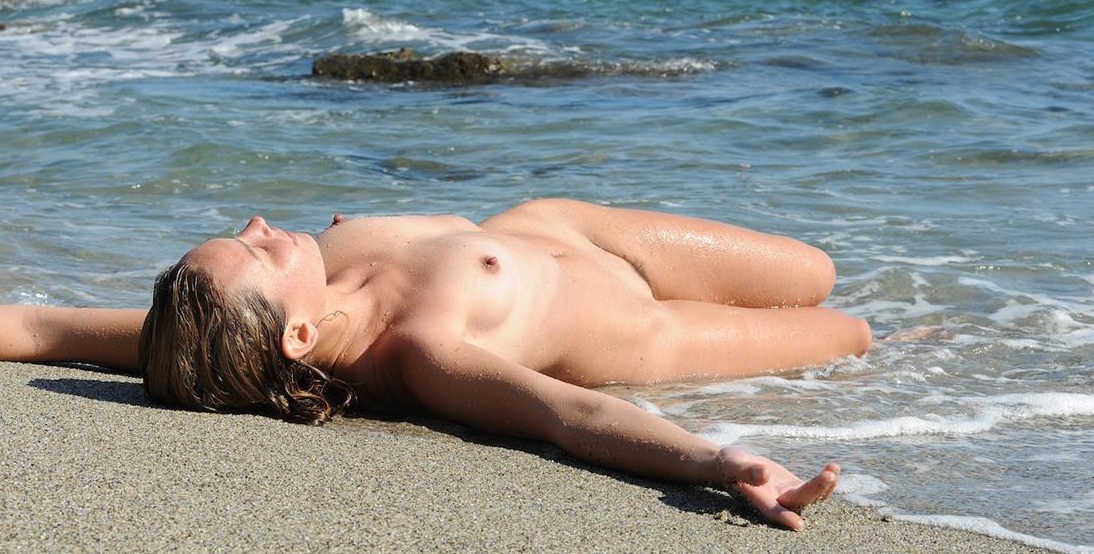
Historical and modern context
Nude psychotherapy: This specific, largely forgotten
practice from the 1960s used non-sexual social nudity as
a tool in psychotherapy to address psychological health.
Modern
applications: Today, people seek therapeutic benefits
from nudity in various ways, such as participating in
nude photoshoots, visiting communal baths or saunas
(like the Sento in Japan), and attending workshops that
are focused on body positivity and healing.
Connection
to nudism: The practice is also rooted in the philosophy
of the nudist movement, which often emphasizes a
connection to nature and emotional wellbeing outside of
exhibitionism and sexual activity.
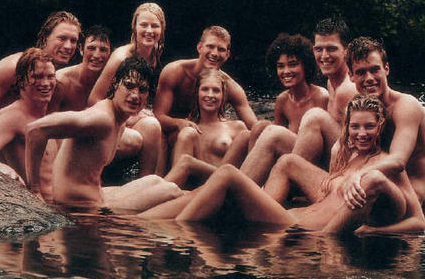
What is
Naturism?
American Association for
Nude Recreation
The Nudist Edge: The
Benefits of the Naturist Lifestyle
How to Live a Nudist Lifestyle
Nudist Resort: Rules and Regulations
Bare Essentials: Beginner's Guide to Naturism
Nude Beaches Every Gay Man Should Visit
Skinny Dipping: Bare
Essentials to Getting Naked
Naked Truth About Nudist Lifestyle
Exhibitionism
Getting
Naked in Public
Interested in showing yourself sexually to others?
Let’s talk about this often misunderstood kink.
What is exhibitionism? Exhibitionism is a kink where you
get turned on by, feel sexual pleasure and have a big
desire to show yourself naked to others, often while
doing something sexual. Being in public is often a part
of the kink! People who are into exhibitionism often get
turned on by it for the attention and the thrill, but
also because they like to turn someone else on, or
because they like to be humiliated.
Consent is very important... It’s very
important not to confuse exhibitionism with flashing,
where you show yourself naked to people who don’t want
to look. That’s something that’s illegal and a
destructive sexual behavior that you need to seek help
for.
With that said, everyone needs to give their consent
before having exhibitionism! This includes setting
boundaries where everyone talks about what they feel
comfortable with and are into doing. You should decide
on a safe word so that any participant, both the one
showing themself, and the ones looking, can stop
whenever they feel like.
How to get started... Most beginners to
exhibitionism start off in a very private situation,
often in front of only their partner, and when that
feels safe and you eventually want more, then it’s
common to explore exhibitionism at kink parties or
online in different communities. And after the session,
it’s important to have shared aftercare and be there for
each other both physically and emotionally!



Sexual ways to explore exhibitionism
--Have a private show for your partner where you give a
strip tease or masturbate.
--Have sex in front of others, either IRL or via cam.
--Having sex with your
partner in public, but not in plain view, as in a back
alley, fitting room, or public restroom.
--Send nudes to your partner or someone else you’re
comfortable with and who’s giving you their consent.
--Find a club, sauna, bath house, or beach where nudity
is okay. Some of these places allow it in a sexual way,
while others simply are for nudists in a non-sexual
context, and both can be satisfying for someone
interested in exhibitionism. Just remember to respect
the rules.
--Participate in a Mardi Gras event by engaging in the
show-me-your-tits-for-beads tradition.
--If solo, it can feel satisfying to masturbate in front
of a mirror, to record yourself, or find someone online
who wants to watch.



Non
sexual ways
Even though exhibitionism is mainly associated with sex
and nudity, you can also explore it in other non-sexual
ways, such as by:
--Dancing for others, often in public
--Performing karaoke
--Wearing see-through or revealing clothes
--Participating in a fashion show
--Volunteering as a nude art class model
--Letting people take photos of you
--Taking a nature walk (in the woods) in the nude
[Source:
Sophie Roos, Diva Magazine, Oct 2025 - Sophie Roos
is a licensed sexologist, relationship therapist, and
author at Passionerad Swedish sex and relationship
magazine]
Other
Alternative Lifestyles
BDSM|Kink
Drag|Cross Dressing
Bear Community
Furries|Cosplay
Ballroom Culture
Polyamory
Skirt Club
Down Low

HOME
QUEER CAFE
│ LGBTQ Information Network │ Established 2017
|